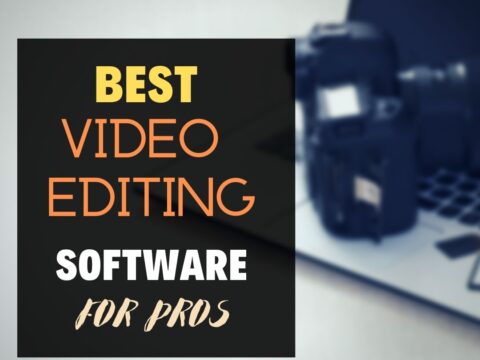As High School students explore post-graduation options, more and more are looking at careers as creators. Boosted by the rise in popularity of generative AI image options like DALL-E, photo editing as a career enjoys a resurgence among those preparing to enter the work force. It is fulfilling and potentially lucrative and relies heavily on individual passion and preparation. The Ask a Tech Teacher team has ideas on how to prepare for this career if it is your future.
Dive into the world of photo editing with our comprehensive guide tailored for high school students. Discover essential skills, artistic techniques, and practical steps for building a standout portfolio. Learn about color theory, composition, and the latest software to kickstart your journey in digital art and prepare for a successful career in photo editing.
How High School Students Can Prepare for a Career in Photo Editing
Photo editing has become a crucial skill in the digital age for professional photographers and anyone aspiring to a creative career. Our article aims to guide high school students like you who are interested in this field, highlighting the essential skills and artistic insights needed for success.
We will explore how mastering photo editing goes beyond learning software, emphasizing the importance of visual storytelling, artistic expression, and technical proficiency. No more words, let’s get it started!
Basics of Photo Editing
Embarking on a photo editing journey requires a solid grasp of the fundamentals. For high school students venturing into this field, it’s crucial to understand the basics to navigate this creative landscape effectively. Different image formats like JPEG, PNG, and RAW each have unique characteristics that affect how you can manipulate them.
Familiarity with these and the use of popular photo editing software allows for a diverse range of transformations. These programs enable resizing, cropping, adjusting brightness and contrast, and even altering backgrounds.
Mastering Photo Editing Techniques
- Color Enhancement and Mood Manipulation: The ability to convey emotions through color correction and grading is at the heart of photo editing. Adjusting colors can evoke warmth and nostalgia or even create a surreal atmosphere. Filters and presets are handy tools for quickly establishing a distinctive style that aligns with your artistic vision.
- Directing Focus with Sharpening and Blurring: Sharpening brings attention to details, guiding the viewer’s eye to focal points in an image. In contrast, blurring techniques, such as motion blur, add depth and can suggest movement or a dreamlike quality. These methods are key in storytelling through the visual hierarchy.
- Retouching Realism: The art of retouching is enhancing a photo while maintaining its authenticity. It’s a balancing act of removing blemishes and retaining natural features, ensuring subjects remain true to life. This approach is particularly significant in portrait and fashion photography, where ethical considerations are paramount.
- Automatic Photo Editing: Modern editing tools offer automatic options for tasks like exposure correction and color balancing. These allow students to focus more on creative aspects, such as color enhancement and retouching. Combining automation and manual editing streamlines the learning process, making it more approachable for beginners.
Developing an Artistic Eye
The transition from mastering the technical aspects of photo editing to developing an artistic eye marks a significant step in a high school student’s journey into digital art. This phase is about refining their ability to see and interpret the world through a creative lens, an essential skill for any aspiring photo editor. Then, we will analyze several key points in more detail.
Understanding Composition and Visual Balance
A key element in developing an artistic eye is understanding composition. Composition refers to how elements are arranged within a frame. It’s about balance, symmetry, and how different components of a photo interact with each other to create a cohesive whole. Students should explore different compositional techniques like the rule of thirds, leading lines, and framing to understand how these can dramatically alter the perception of a photograph.
Exploring Color Theory and Emotional Impact
Color theory is another crucial aspect. It’s not just about making colors look good together; it’s about understanding the psychological impact colors have and how they can be used to convey emotions and moods in an image. Students should experiment with color schemes and learn how different colors interact and affect the viewer’s emotional response.
Developing a Personal Style
As students become more comfortable with the technicalities of photo editing, they should focus on developing a personal style. This means experimenting with different techniques, subjects, and aesthetics to find what resonates with them. Encouraging students to analyze the work of renowned photographers and editors can inspire and help them identify elements they want to incorporate into their work.
The Importance of Critique and Feedback
Finally, receiving critique and feedback is essential in developing an artistic eye. Students should be encouraged to actively share their work with peers, teachers, and online communities and seek constructive criticism. This feedback can provide invaluable insights into areas for improvement and help them refine their artistic vision.
Building a Portfolio and Gaining Experience: A Step-by-Step Guide
For high school students aspiring to a career in photo editing, creating a compelling portfolio and gaining real-world experience are vital steps. This guide outlines practical steps to build a portfolio showcasing their skills and gaining valuable field experience.
Step 1: Curate a Diverse Portfolio
- Select Your Best Work: Choose a range of your best photo edits, including different styles like landscapes, portraits, and abstracts.
- Organize Thoughtfully: Arrange your work to demonstrate a progression of skills or group similar styles together.
- Update Regularly: Keep your portfolio fresh with new work, showing your ongoing development and latest skills.
Step 2: Gain Practical Experience
- Seek Internships and Freelance Projects: Look for opportunities in local studios or with online freelancing platforms.
- Collaborate with Peers: Work on projects with classmates or join online communities for collaborative ventures.
- Enter Competitions: Participate in photo editing contests to test your skills and gain recognition.
Step 3: Utilize Online Platforms
- Create an Online Portfolio: Use platforms like Behance, Instagram, or Flickr to showcase your work and reach a broader audience.
- Engage with the Community: Follow other editors, comment on their work, and participate in online discussions.
- Seek Feedback: Use these platforms to get constructive feedback and make connections in the industry.
Step 4: Commit to Continuous Learning
- Stay Updated with Trends and Tools: Explore new photo editing software updates and industry trends regularly.
- Educate Yourself: Enroll in online courses, watch tutorials, and attend workshops or webinars.
- Reflect and Adapt: Evaluate your work, adapt your style, and explore new techniques.
Following these steps will help high school students build a strong portfolio and acquire hands-on experience and skills necessary for a successful career in photo editing.
Conclusion
As we wrap up this guide, it’s clear that for high school students venturing into photo editing, the journey is as rewarding as it is challenging. It starts with getting the hang of the basics and gradually moves towards more artistic expressions and building a personal portfolio. Remember, in the ever-changing landscape of photo editing, staying adaptable and eager to learn is your secret weapon. Each step you take, from tweaking a color palette to sharing your latest creation, shapes you into a skilled editor and a storyteller with a camera.
So, embrace this adventure with all its ups and downs because it’s not just about the photos you edit; it’s about the stories you’ll tell and the eyes you’ll see the world through. Your journey in photo editing is just beginning, and it will be exciting!
Here’s the sign-up link if the image above doesn’t work:
https://forms.aweber.com/form/07/1910174607.htm
Copyright ©2024 – All rights reserved.
“The content presented in this blog is the result of my creative imagination and not intended for use, reproduction, or incorporation into any artificial intelligence training or machine learning systems without prior written consent from the author.”
Jacqui Murray has been teaching K-18 technology for 30 years. She is the editor/author of over a hundred tech ed resources including a K-12 technology curriculum, K-8 keyboard curriculum, K-8 Digital Citizenship curriculum. She is an adjunct professor in tech ed, Master Teacher, webmaster for four blogs, CSTA presentation reviewer, freelance journalist on tech ed topics, contributor to NEA Today, and author of the tech thrillers, To Hunt a Sub and Twenty-four Days. You can find her resources at Structured Learning.





































